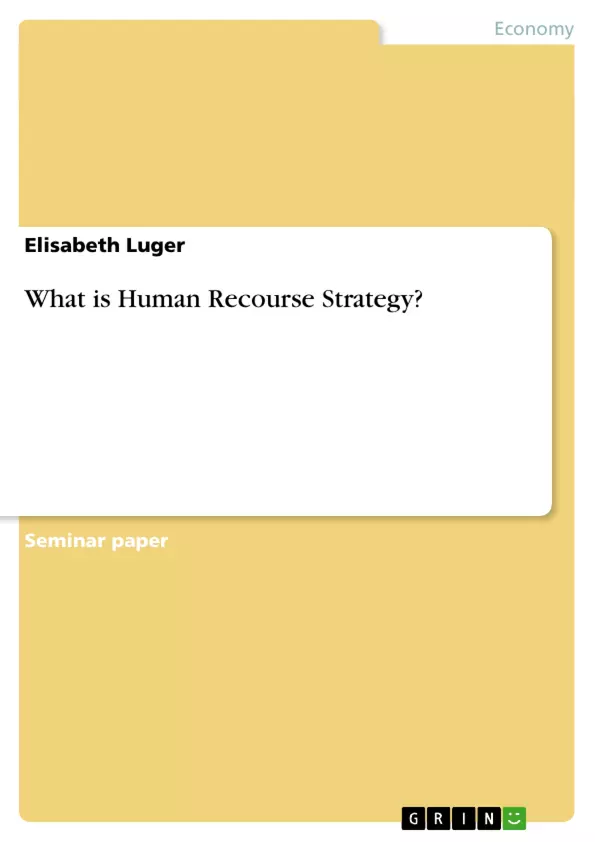The field of Human Recourse Strategy (HRS) is a relatively new area of
research and therefore a lot of different approaches and opinions exist. With the
emergence of different schools, approaches and frameworks the gap between the
academic world and the one of managers and their businesses widened up.
Therefore, Wright and McMahan (2001, p.50) suggest the need for a good theory,
which goes in line with the business strategy field where Elfring and Volberda (2001)
see the need for synchronizing the diverse ideas which have developed (2001).
To get the whole picture I will first illustrate the historical background and the value of
Human Recourse Strategy (HRS), then go on to the different approaches of HRS and
also examine if these approaches are rather a plan, an outcome or a process. Finally,
I will conclude with an own perspective on the HRS field.
Inhaltsverzeichnis (Table of Contents)
- Introduction
- The Development of HRS
- Different Connections between HRS and Business Strategy
- The Universalistic Approach
- The Contingency Approach
- The Configurational Approach
- Conclusion
Zielsetzung und Themenschwerpunkte (Objectives and Key Themes)
This text explores the concept of Human Resource Strategy (HRS), analyzing its development and the various approaches to linking it with business strategy. The goal is to provide a comprehensive understanding of the different perspectives on HRS and whether it should be viewed as a plan, an outcome, or a process.
- The historical development of HRS
- Different theoretical approaches to HRS
- The relationship between HRS and business strategy
- The debate over whether HRS is a plan, an outcome, or a process
- The importance of aligning HRS with organizational goals and strategy
Zusammenfassung der Kapitel (Chapter Summaries)
- Introduction: This chapter introduces the topic of Human Resource Strategy (HRS) and highlights the diverse perspectives and approaches that exist within this field. It emphasizes the need for a cohesive theory that bridges the gap between academia and managerial practice.
- The Development of HRS: This chapter traces the evolution of HRS, focusing on its emergence in the 1970s and its increasing importance in strategic management. It examines how HRS emerged as an attempt to integrate human resources more effectively into business strategy, particularly in response to the success of Japanese companies.
- Different Connections between HRS and Business Strategy: This chapter explores different theoretical approaches to linking HRS with business strategy, including the Universalistic, Contingency, and Configurational approaches. It discusses the strengths and limitations of each approach and their implications for understanding the role of HRS in achieving competitive advantage.
Schlüsselwörter (Keywords)
The main keywords and focus topics of this text include: Human Resource Strategy (HRS), business strategy, competitive advantage, Universalistic Approach, Contingency Approach, Configurational Approach, best practices, employee behavior, strategic management, resource-based view, knowledge-based view, organizational performance, and HRM.
- Quote paper
- Elisabeth Luger (Author), 2004, What is Human Recourse Strategy?, Munich, GRIN Verlag, https://www.grin.com/document/21770



